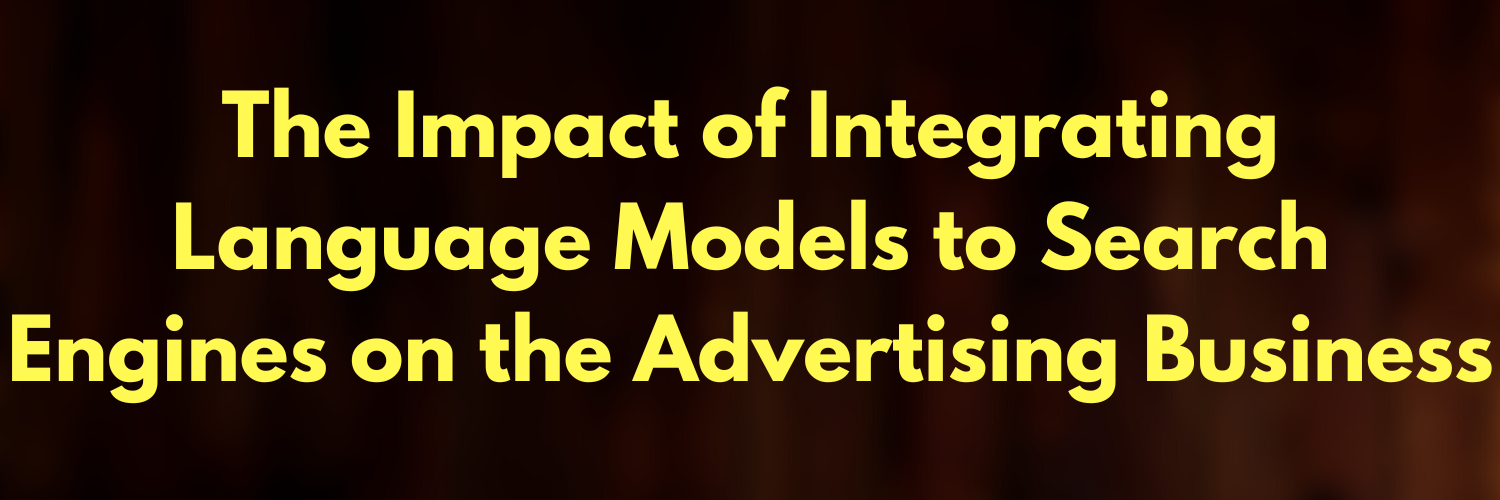The Impact of Integrating Language Models to Search Engines on the Advertising Business
Integrating advanced language models such as OpenAI’s ChatGPT is transforming how people access information and search for what they need.
With the ability to ask questions in natural language and receive accurate and relevant answers, people are becoming less reliant on traditional search methods and less likely to click on links.
This has posed significant challenge for the advertising industry, which must adapt to these changes and find new ways to reach its target audience.
A shift in the way people search for information
The days when people had to click links after links and browse through page after page of search results are gone. With language models, people can now ask questions in natural language, and can receive accurate and relevant answers within one or few conversations.
This has made search engines far more accessible and user-friendly. There are already one or two search engines out there that provides a chatbot. Microsoft also is going to integrate chatGPT to Bing.com. Now, it’s easier that before to find specific answers through conversing with the integrated chatbots.
Fewer clicks, fewer opportunities for advertising
The integration of language models has changed how people access information and search for what they need. As a result, people are becoming less reliant on traditional search methods and less likely to click on links.
This has significant implications for the advertising industry, which has long relied on user-based clicks and page views for success and thus making profits.
In the past, businesses could easily reach their target audience by placing ads on search engine results pages. Also, when a user clicked on certain links, for example, a blog post or a news website; the users used to see a lot of advertisements on the webpages.
With the integration of language models, this strategy is becoming less effective, as people are less likely to click on links and more likely to receive answers directly from the language model.
Finding new ways to reach the target audience
The advertising industry must adapt to these changes and find new ways to reach its target audience. One option might be to develop targeted ads that appear within the results provided by the language model.
I am not sure, how that can be achieved. But this could allow businesses to reach their target audience more directly and lead to a more successful advertising campaign.
Another option is to focus on develop more quality content and proper content marketing. For example, as a vlogger, you can simply redirect your viewers to your websites or webpages where you already have ads.
By creating valuable and relevant content, businesses can establish themselves as experts in their field and build trust with their target audience. For example, people, still would like to go to the blogs, forums, and news sites they used to visit because they knew quality contents would be available there. This can increase brand awareness, engagement, and loyalty and drive sales.
Email or use of social media marketing can be a good option for influencers. You can write a blog post and then send emails to the subscriber list or let your followers know on social medias. That still should work fine.
Conclusion
In conclusion, integrating advanced language models such as OpenAI’s ChatGPT is transforming how people access information and search for what they need. This has significant implications for the advertising industry, specially small businesses like content creators and influencers, who must adapt to these changes and find new ways to reach its target audience.
Whether through targeted ads within the results provided by the language model or through content marketing; the key is to find new and innovative ways to connect with the target. But as a user, I am definitely happy for not being compelled to browse through links to find desired contents and run into the ads I don’t wanna see. 😎



Leave a comment